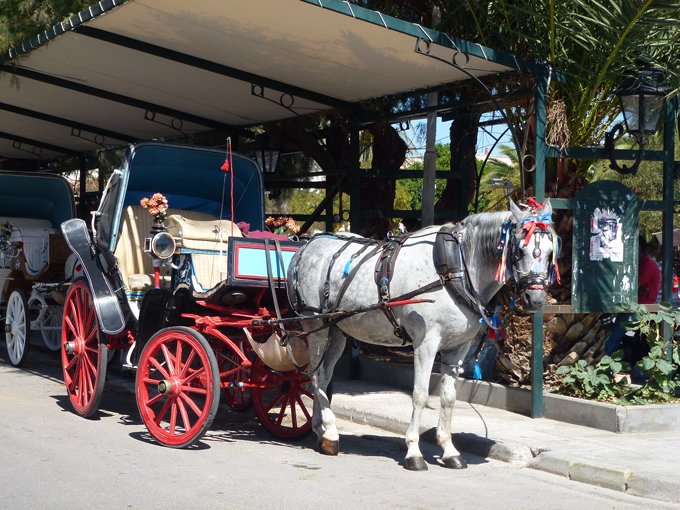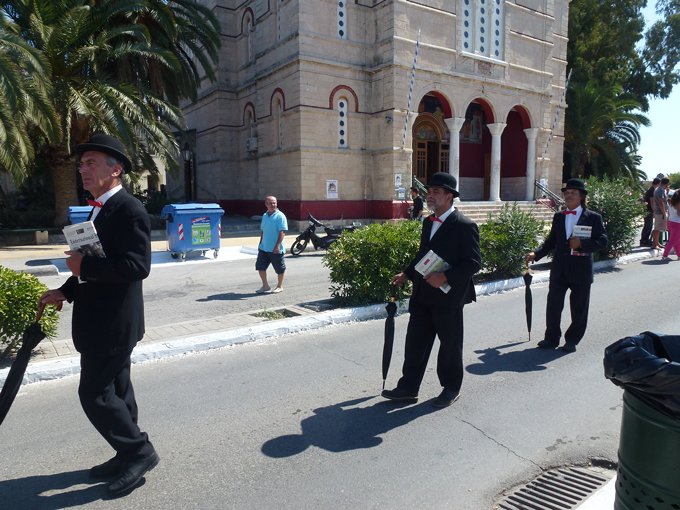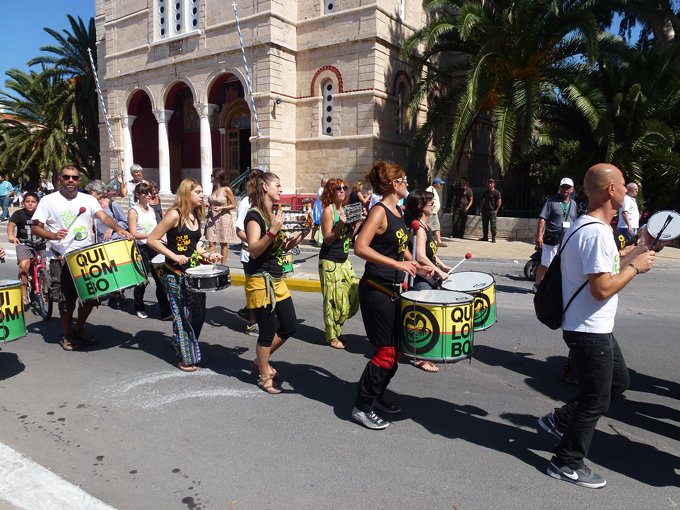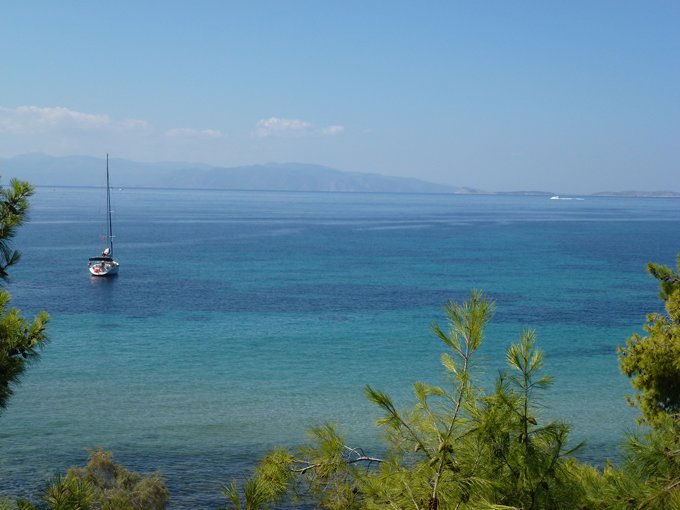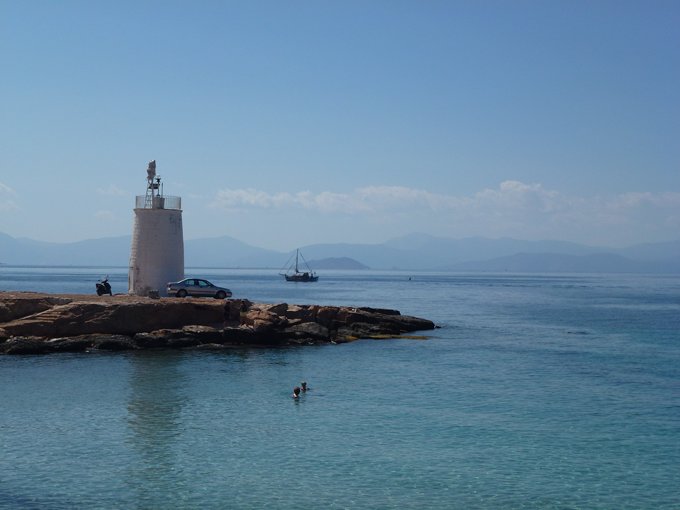37:44.48N 23:25.65E Aigina

37:44.48N 23:25.65E Aigina
Thursday, 20th September, 2012.
We left the sunken city and holstered the main and genny for the sail to Aigina. Once we were away from the mainland the wind completely died and so we had to turn the key and motor. It is only 15 miles from Epidhavros to Aigina past the beautiful green island of Aigkistri (Angistri). The sun was shining, we sat at the cockpit table and had lunch and enjoyed our journey across to Aigina town and into the harbour.
Unfortunately, there was no space so we had to come out and anchor off the beach. New friends we met on Aigina said to give them a ring if we could not find a place and they would phone a friend who runs the harbour. Ten minutes later they were back on the phone to say he had a place for us and we then had to say our Irish friends who had just arrived needed a space as well. Yes the man had to two spaces and to come in straight away or the spaces would be gone. We were so pleased we had asked for help as the wind blew all night long and we could see the boats left anchored and there masts bobbing back and forth in the force 4 to 5 wind.
Aigina is only 12 miles south west of Piraeus, the main Athens port. Many Greek people have holiday homes on the island or come by ferry for the day. The hydrofoil and the ferries seem to run non-stop into the harbour on their way around the islands. The island has been inhabited for over 4,000 years. According to Greek mythology the island’s name was changed from Oinoni to Aigina, who was the daughter of the river god Aspos after Zeus installed her on the island as his mistress.
By the 7th century BC Aigina was the first place in Europe to mint its own silver coins which became accepted currency throughout the Greek speaking world. Aigina controlled most of the foreign trade in Mediterranean and the Black Sea and had vast wealth. Their legendary nautical skills and wealth annoyed neighbouring Athens. They settled the long term rivalry by conquering the island in 456 BC. It is also the first place in Greece where the Greek flag was raised at the end of the Greek War of Independence.
The one pillar of the 6th century BC Temple of Apollo stands overlooking the harbour area. The 6th century Sphinx of Aigina was found here and is now in the Aigina museum.
We had come for the pistachio festival which is held for four days in the middle of September. We were not disappointed as there was music every evening, a ladies band which paraded through the high street, children dressed as pistachio trees, and tents selling anything you could think of which was made of pistachio nuts. We sampled the pistachio ice-cream and the two of the three varieties for sale were delicious.
There were clothes stalls, photographs of the island for sale, jugs decorated by hand, cakes, sweets, pistachio syrup, biscuits and sacks of pistachios all being sold. It was a fun place to visit and join in the local fun. Apparently this year’s crop of pistachio nuts has been the best they can remember for a lot of years. We saw the trees planted in people’s gardens and orchards but nothing else will grow anywhere near these trees. It is the first time in our travels that we have seen the fruit growing.

